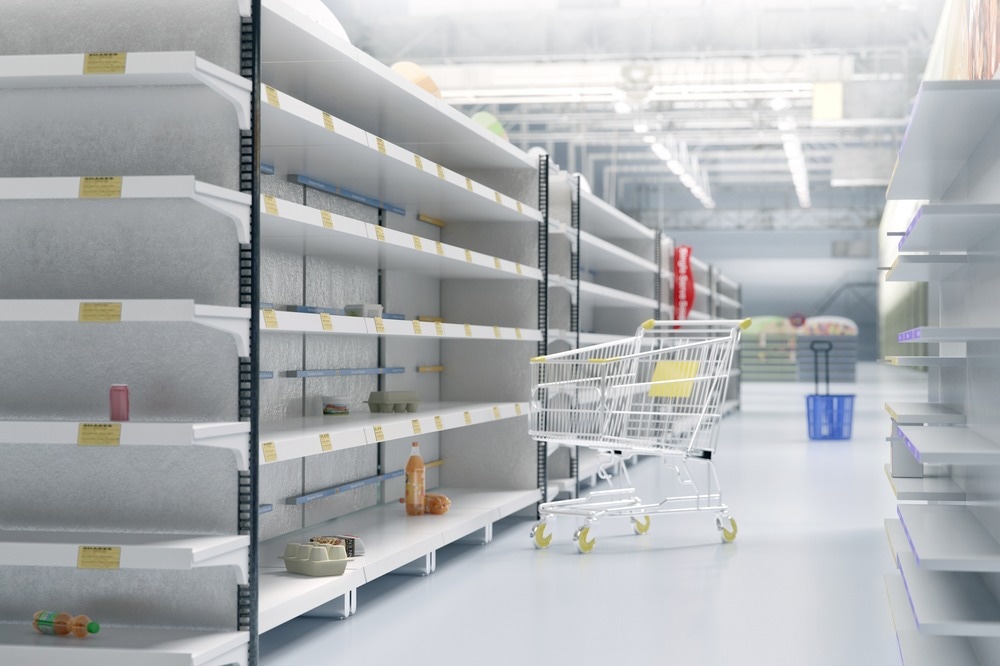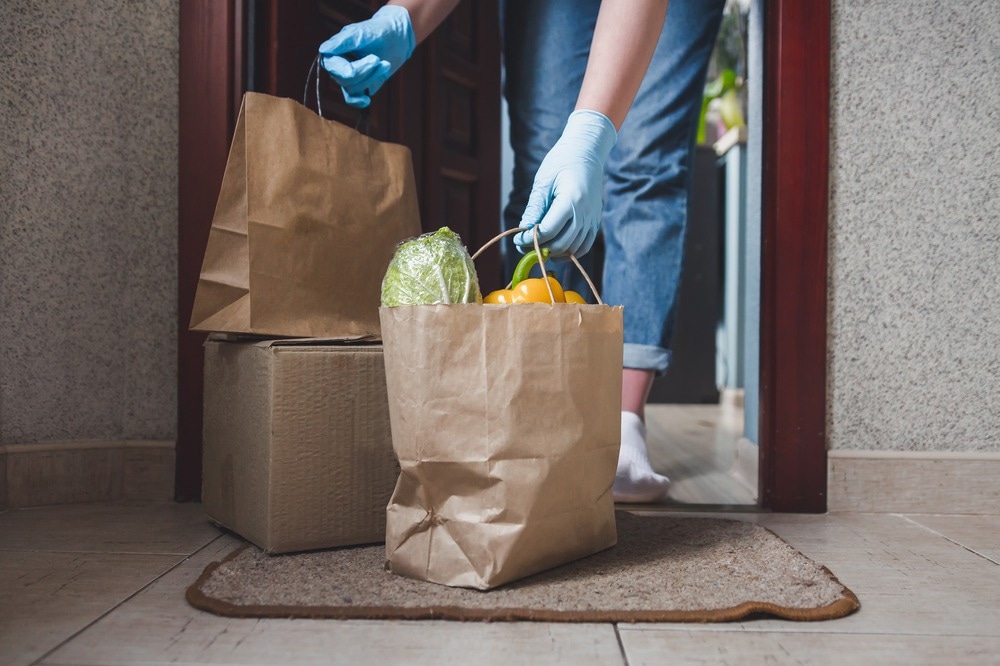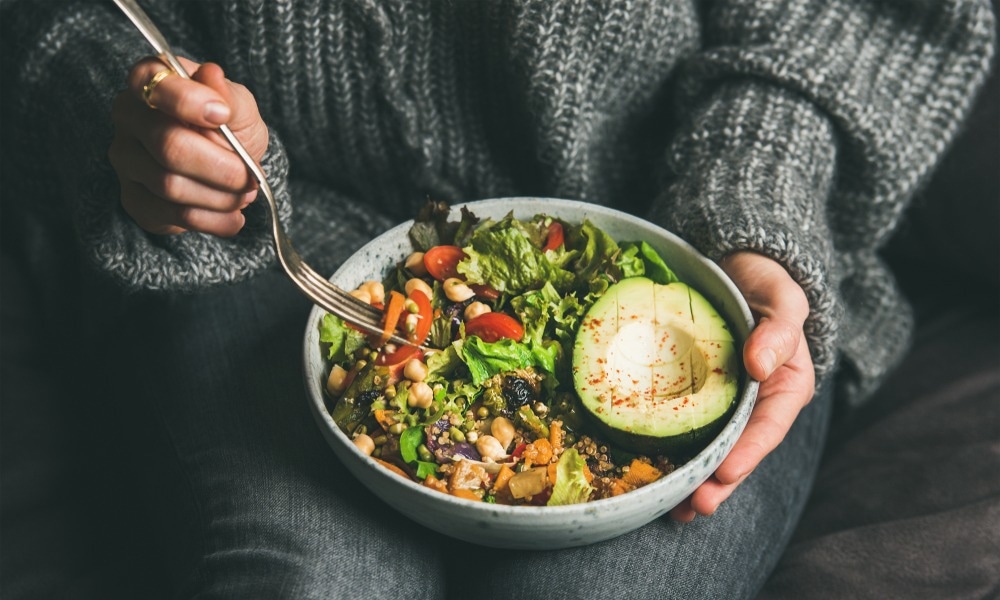In April 2020, more than half of humanity was under lockdown. Throughout the coronavirus disease 2019 (COVID-19), lockdown and social distancing has been adopted by most countries as an effective way to hinder the spread of the disease. Although safety measures are being relaxed two years later, these rules have had long-lasting effects on consumer habits and how we produce, shop, and consume food.

Image Credit: Corona Borealis Studio/Shutterstock.com
How has COVID-19 affected the way we produce food?
Panic buying at the beginning of the pandemic put a strain on the agriculture sector and supply chain. Food is the second biggest priority after medication, and the industry needed to adapt rapidly. Transportation was the most impacted sector and called for ingenious ways to ensure the reduction in transport would not mean less food.
This adaptation was achieved thanks to new technologies such as modified atmosphere packaging. That is, optimizing the gas mix in foodstuff packaging to increase their storage life. Also, technologies for virus decontamination, such as UV exposure, were crucial to minimize the spread.
How has COVID-19 affected what food we buy?
As mentioned previously, the first effect of lockdown was panic buying and hoarding essential products, causing a shortage of many necessities. However, this strain on the supply chain was swiftly restored to normal after the first wave of fear passed. However, the shift in spending was not short-lived, and COVID-19 has so far permanently changed consumers’ perceptions.
There was a 61% increase in spending during the first lockdown, with a greater tendency to purchase necessities (91% increased spending on necessities). COVID-19 prompted a shift of perspective, making us much less likely to indulge in impulsive, hedonic shopping and redirect ourselves towards products framed as necessities.
How has COVID-19 affected the way we buy food?
Quarantine also meant that physical access to supermarkets was more complicated. This led to an important deployment and growth of delivery services and e-commerce. Supermarkets chains deployed and streamlined their delivery offer to meet the booming demand. Amazon, the multinational focused on e-commerce, declared a 70% profit increase in the first nine months of 2020.
Similarly, delivery services such as Uber Eats and Deliveroo grew four to seven times larger compared to 2018. These were especially crucial to the restaurant industry as it was highly affected by the sanitary measures.
This reflects how, as fear of COVID-19 and the need to fight its spread arose, consumers increasingly turned to delivery services for food and groceries, especially as they represent the most straightforward way of complying with social distancing.

Image Credit: Shyntartanya/Shutterstock.com
How has COVID-19 affected what food we eat?
The virus changed not only the way we shop but also what we eat. The increase in spending seen at the beginning of lockdown attests to the increase in homemade meals. This resulted in both positive and negative effects on public health.
An estimated 38% increase in the number of meals consumed at home led to reduced consumption of fats, oil, preservatives, and additives. A study that leveraged AI to analyze keywords in recipes on the Internet also reported a decrease in fats, oil, and sweeteners combined with a significant rise in pulses (semantic keyword reported 300% more) and soups/pottage (280% increase). This could have beneficial effects in the long run.
On the other hand, an increase in snacking behavior was observed. This is associated with increased spending and more time spent at home. In parallel, quarantine also impacted the levels of physical activity.
Studies on the level of physical activity are scarce, and results seem to be highly contextual. However, physical activity has most likely been impacted with no physical access to gyms, parks, and many other facilities. Decreased physical activity paired with snacking behavior could have long-term consequences of obesity and weight gain.
Environmentalism on the rise
Plant-based food sales have been rising for years, even before COVID-19. Nevertheless, the pandemic accelerated sales, and the market grew nearly three times faster than total food sales from 2018 to 2020. Plant-based food sales grew by 45% in the last two years alone.
This is associated with the spread of vegetarianism and veganism. In the United States, a report found that people who identified as meat-eaters were only 71%, down from 85% in 2019. In the United Kingdom, veganism followed the same fashion, and the number of vegans rose by 40% in 2020.
More broadly, the pandemic brought the public’s attention to climate change. The pandemic educated the public about zoonotic diseases and the consequences of factory farming. Additionally, during the first lockdown, people witnessed the return of wilderness in big cities as human activity was suspended, emphasizing the responsibility of humans for climate change.
The COVID-19 pandemic highlighted many flaws of the current economic system and its lack of resilience. This will encourage individuals and society to alter their habits and adopt more environment-friendly behaviors. However, to make a significant impact, these unprecedented times must spark lasting change.

Image Credit: Foxys Forest Manufacture/Shutterstock.com
Sources:
- Chitrakar, B., Min Z., and Bhesh B. (2021). Improvement Strategies of Food Supply Chain through Novel Food Processing Technologies during COVID-19 Pandemic. Food Control 125 (July): 108010. https://doi.org/10.1016/j.foodcont.2021.108010.
- COVID-19 Pandemic Changes the Food Consumption Patterns. ScienceDirect. Available at: https://www.sciencedirect.com/science/article/pii/S0924224420305823. (Accessed on 24 March 2022).
- Adolfo Di C., Ceccato I., Marchetti D., La Malva P., Maiella R., Cannito L., Cipi M., et al. (2021). Psychological Factors and Consumer Behavior during the COVID-19 Pandemic. PLOS ONE 16 (8): e0256095. https://doi.org/10.1371/journal.pone.0256095.
- Arora T. and Grey I., (2020) Health Behaviour Changes during COVID-19 and the Potential Consequences: A Mini-Review. Available at: https://journals.sagepub.com/doi/full/10.1177/1359105320937053.
- Increase in Veganism: Why Is Veganism on the Rise in 2021? Sentient Media (blog). https://sentientmedia.org/increase-in-veganism/. (Accessed on 24 March 2022).
- Ordering in: The Rapid Evolution of Food Delivery. McKinsey. Available at: www.mckinsey.com/.../ordering-in-the-rapid-evolution-of-food-delivery. (Accessed on 24 March 2022).
Further Reading
Last Updated: Jun 29, 2022